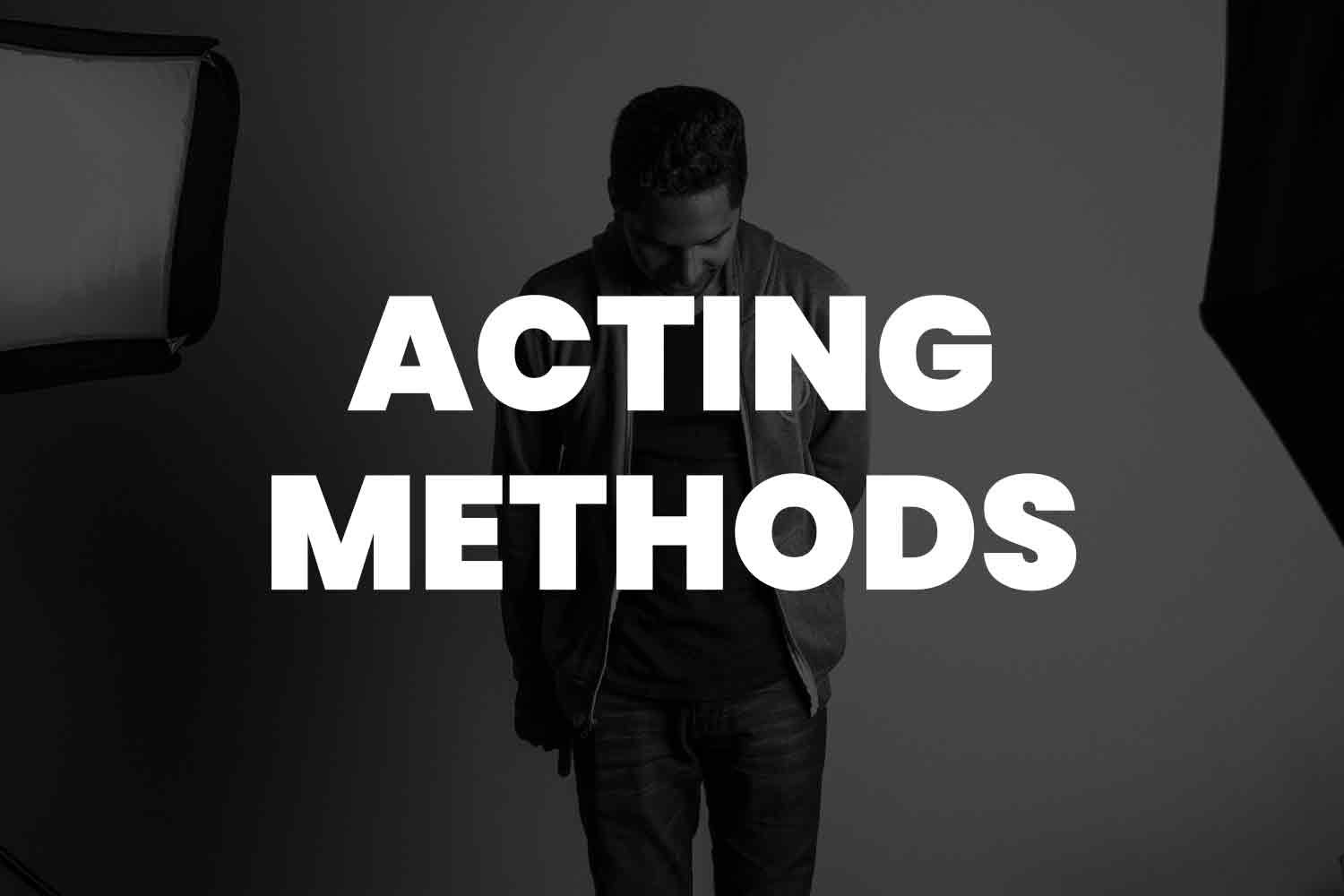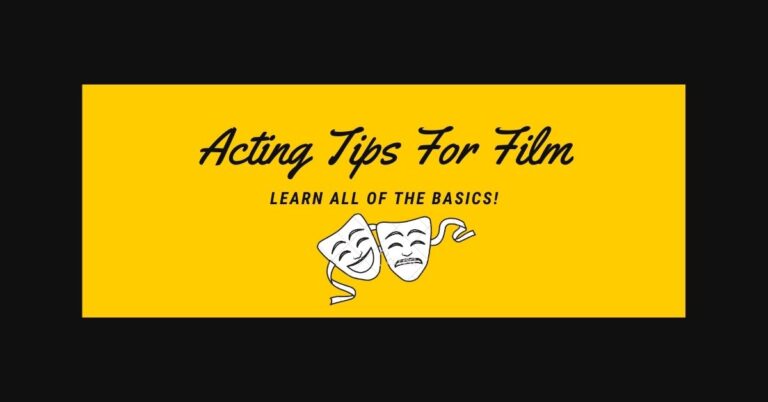13 Popular Types of Acting Methods – Comprehensive guide
A list of popular acting methods are the Stanislavski Method, Stella Adler Method, Method Acting Technique, Meisner Technique, Chekhov Technique, Practical methods, classic method, and…
Let’s have a look:
Do you have a passion for acting and want to learn about it but are facing difficulty knowing about acting or if you have gotten some ideas that didn’t work then stop worrying and be motivated. Today I’m here to assist with acting methods.
Acting is not so easy it requires a lot of hard work and passion for becoming an actor. Here in this blog, you will get to know all about the 13 acting methods, and their details. At the end of this blog, the best book for acting and the best school for acting are suggested for you. Hope you will find your destiny to be an actor through our platform. So here are the acting methods:
Table of Contents
Type of acting methods
The following is the list of all acting methods, which will help you achieve your acting career goal. If you will ask the question in auditions about the acting type then you can easily answer this question, because here we provide the list of acting methods. And one more thing you need to do is to select one type of acting method so you can get the command on it. Let's have a look at all 13 types of acting methods:
Acting Method 1: Stanislavski's acting method
Stanislavski's method is widely used all over the globe. It was created by a Russian actor and director. This acting method is used to get a realistic approach in the movie. The key elements of Stanislavsky's acting method are given below.
Element 1: Affective memory
Affective memory is related to creating a true emotional memory that links to emotions to get a realistic approach to acting.
Element 2: Provided circumstances effect
This method is also used to establish a true feeling in acting by recognizing the background atmosphere and the situation. Actors give attention to the environment and act accordingly just to elevate the authenticity of the action.
Element 3:Objective
Objective and super objective is another acting method in which an actor performs to get the immediate sources of life, objective acting method, and in another acting method, the actor achieves the goals of life, super objective acting method. In this method, actors show how to achieve the goals of life.
Element 4: Action and Tactics method
In this method, an actor through his actions and tactics shows how to achieve the objectives. His actions and tactics emphasize how to achieve the goals.
Element 5: Inner truth
Inmers truth motivates actors to get an expressive reality within the given character of the actor.
Element 6: Concentration
Through concentration and focusing on the present situation to be engaged in the present situation and partner actor.
Element 7: Subtext
The subject is an acting method of finding out the hidden and underlying meaning of the actor's dialogue.
Acting Method 2: Stella Adler's acting method
Stella Adler's contrast with the Stanislavski method developed her technique. Stella was an American acting teacher. Her key points of the technique are given below.
Element 1: Imaginations
Imagination is an acting method that enables an actor to understand the details of each point through his imagination.
Element 2:Script examination
Script analysis is another acting method through which the industry examines every point and objective and the overall context of the drama
Element 3: Provided circumstances
Like the Stanislavski method Stella emphasizes the given circumstance and learns about that but in that technique, places are more important
Element 4: Character and technique
In character and style, an actor should consider both the things he just not focuses on the acting but style too He plays with style because both are essential parts of the acting
Element 5: Physicality
Physicality influences acting the most through actors’ movements and style he expressed his feelings and intentions
Element 6: Action and reason
Through this acting method, an actor guides others on what he wants, objectives, and actions to show how he can get this.
Element 7: Society and Obligation
Stella emphasizes the role of the actor's connection to the society and his obligation to serve the society. Through significant stories and plays
Acting Method 3: Classical acting
Classical acting belongs to past texts, especially Shakespearean plays, and in ancient Greece, the key points are given below
Element 1: Verse Speaking
Verse speaking includes mastery in poetic and rhythmic styles, including iambic pentameter.
Element 2: Rhetorical acting method
Rhetorical acting methods see the use of rhetorical devices and their uses which include antithesis and parallelism which help to elevate diversity to the next level.
Element 3: Physicality and gestures acting method
Physicality and gestures include actors’' appearance and body language which are used to convey a meaningful lesson in theatrical expressions.
Element 4: Text examination
This acting method includes the analysis of the script, about what lesson is given through deep reading like the insight of nuances of languages, subtext, and the cultural context of the play,
Element 5: Voice training
Voice training includes training for vocal techniques to project and articulate more clearly which are crucial for acting in large theaters with ease and without modern touch.
Element 6: Character archetype
This Acting method includes an understanding of the archetypal and portrayal types of characters that are commonly found in classical works.
Element 7: Classical styles
This acting method includes adaptability associated with different historical eras like the boasting of Greek tragedy and naturalistic styles of Elizabethan drama.
Acting Method 4: Practical aesthetic acting mode
This is one of the practical aesthetic techniques developed by playwright David Mamet and actor William H. Macy here the key points for this acting methods
Element 1: Action based approach
This Acting method includes character-specific techniques and methods to move the performance to the next level.
Element2: Obstacle
This acting method enables an actor about upcoming obstacles and to find their solution before time.
Element 3: Moment-to-moment realism
In this acting method the actor prioritizes authenticity in every step.
Element 4: Script Analysis
This acting method informs about the keen observation of script and actors observes on every detail of the play
Element 5: No emotions without action
This technique make you understand about the emotion that should be natural and sector should develops real emotions
Element 6: Repetition exercise
This acting method allows a tie to repeat his action again and again just to make it more natural and obvious.
Element 7: Personalisation
This acting method enables a tie to create a personal connection to the character just to emerge true emotions.
Method 5: Meissner acting method
Element 1: Listening and responsibility
This acting method revolves around the importance of active listening and acting
according to the situation.
Element 2: Emotional preparation
This method emphasizes the personal attachment of the actor to the character just to produce authenticity in action.
Element 3: Imagination and fantasy
Imagination and fantasy are acting methods to experience and create fantasy before acting just to understand better and to create authenticity.
Element 4: Be truthful
This method of acting is important to produce meaningful action by staying committed to the job.
Element 5: Independent Activity
In this method the actor stays busy with activities unrelated to the screen.
Element 6: Repetition
Repetition makes an actor act flawlessly.
Method 6: Chekhov technique
Element 1: Psychological gestures
Psychological gestures enable an actor to use physical techniques to access a character's inner life and gestures to show the emotions of the character.
Element 2: Imaginations
Imagination places a strong emphasis on the actor's fantasy as a great tool to introduce authenticity within an act.
Element 3: Elasticity
Chekove’s essential element of developing elasticity and an expressive body. Which includes coordination, and control all over the body.
Element 4: Sensation
Physical sensation of an actor makes the actor connect the body to his emotions which shows authenticity.
Element 5: Qualities of movement
Ease, form, beauty, and the whole are the four qualities of Chekov he introduced as basic movements that are used to express the actor's physique.
Element 6: Radiation and receiving
In this acting method, the actor experiences radiation energy outward and radiation energy inside. This provides a responsive presence of the actor.
Element 7: Centre of the body
This acting method enables an actor to use psychological centers just to make physiological and emotional aspects more clear.
Method 7: Uta Hagen
Uta Hagen was an acting teacher and a German-born American actress She introduced the following techniques in acting methods:
Element 1: Object exercise
She used tangible objects to put life in acting by maintaining the reality from tangible objects to create authenticity.
Element2: Substitution
Uta Hagen introduced her personal experiences and memories to get emotional attachment with her characters
Element 3: Fourth wall
Uta Hagen challenged the traditional way of fourth wall acting and encouraged the actores to be engaged with the audience and to produce immediate and authentic connection.
Element 4: Truth in every inch
She emphasized the truthful living in every action. And to produce instant response to the circumstances rather than a predetermined action.
Element 5: Objective and Tactics
Uta Hagen made it more clear about actor action to get character objectives through her specific methods.
Element 6: Stanislvasky’s influence
She used Stanislavsky and her personal techniques for practical exercise.
Element 7: Teaching legacy
Uta Hagen is a big name in acting and earned fame in the industry of acting.
Method 8: Spolin technique
Spolin was an American theater educator who introduced her method to facilitate creativity, strong feeling of ensemble and spontaneity. The key elements of the Spolin technique are given below:
Element 1: Games and exercises
This technique highly depends on games and exercise to initiate creativity, increase communication mastery,
Element 2: Be in the present moment
This Spolin acting method emphasizes the being in the present moment to give it a more realistic approach. Actors need to focus on the surroundings and respond instinctively.
Element 3: Director’s role
Spolin’s acting methods include the role of dictator; he has to observe and guide the actor keenly rather than to dictate.
Element 4: Storytelling Through Improvisation
Through improvisation actors organically create stories and characters through this acting method actors explore emotions and relationships without predetermined acts.
Element 5: Ensemble Building
In this acting method the actor develops trust, collaboration and understanding of the group dynamic.
Element 6: Transformation Through Play
Spolin’s through this acting method explores the way how they transform and explores the new ways to evolve with time and requirements of the time.
Method 9: Physical Theater
This acting method of physical theater belongs to the genre of performance which uses body language to convey meaningful lessons beyond traditional verbal communication and uses physical gestures to convey emotions, stories and notions. It includes
Movement and expressions, visual composition, mime and gestures, mask work, acrobatics and circus skills, collaborative creations, minimalist experimental settings, Multidisciplinary Approach, and training
Method 10: Brechtian Method
This method includes a theatrical approach aimed at distancing the viewers emotionally from the characters and events in the play. This acting method is associated with Brecht, a German playwright and theorist. This acting method also encourages the audience to analyze and question social and political issues in the country. This acting method includes the Alienation effect, breaking the fourth wall, epic theater, songs and music, The gestus, multiplicity of roles, interrupted Action, Dedication, and collaborative creation.
Method 11: The Strasberg Method or Method acting
This acting method influenced the world of acting, especially Hollywood. The other name is the Lee Strasberg method. This acting method was developed by an American actor and director. His key elements include Affective memory, sense memory, methods of physical Actions, substitution, private moment, relaxation and concentration, character analysis, emotions truth, and repetition exercises.
Method 12: Viewpoints
Viewpoints give information for creating and filtering the performance motivates shared vocabulary to produce awareness of the element that is used in, compelling and dynamic, the following g are an amazing acting method to produce authenticity . The spacisa relationship, kinesthetic response, duration repetition, shape, topography, Gesture, tempo, emotional content etc
Method 13: Theatre of the Oppressed
The acting method of theater of the oppressed is based on Boal’s commitment to social justice. Belongs to theatrical education it was introduced by Brazilian theater practitioner Augusto Boal the key factors are Forum theater, image theater, invisible theater, legislative theater, rainbow of desires, cop in the head, image forum, joker and aesthetic of the oppressed.
Method Acting vs Natural acting
The key difference between method acting and natural acting is the approach to emotions, in method acting the actor experiences the personal emotions while natural acting is based on authentic emotions. Breaking it down simply, method acting is like when actors tap into their own feelings to express emotions for a role. On the flip side, natural acting is about showing genuine emotions in the moment without drawing directly from personal experiences. So, one is diving into personal feelings, and the other is about being real on the spot!
Method Acting vs Meisner
Method acting deeply revolves around the actors personal emotions while Meisner acting revolves around the moment to moment interaction to get authentic emotions.
In simple terms, Method acting is like your own feelings and experiences to bring out emotions for your character, while Meisner acting is more about reacting naturally in the moment to make the emotions feel real. So, one is like exploring your inner world, and the other is all about being genuine in the heat of the scene.
Acting method books
Black Acting Methods" by Sharrell Luckett is a treasure of acting techniques and methods that can increase your acting skills to new heights. "Black Acting Methods" is not just a theoretical guide; it's a practical companion for actors at every stage of their acting journey.
Whether you're a seasoned actor or a beginner, the book equips you with the tools to create memorable performances. It guides you on beginner acting tips, how to act, how to improve visual storytelling technique, makeup rules, voice acting tips, commercial acting tips, audition tips, acting tips for kids, acting tips for crying, and modeling tips
This book will also tell you how to enroll in the Disney channel as an actor and the best acting tips from directors and famous actors.
Here at this point, I'm sharing the link to the book:
If you're passionate about acting and eager to expand your experience then, "Black Acting Methods" is a valuable addition to your reading list.
Top Acting School in the World
Choosing the right acting school can be a game-changer for aspiring actors. When it comes to the top acting schools in the world, one name that stands out is the Lee Strasberg Theatre & Film Institute. What sets it apart is the practical approach to learning. You won't just study acting; you'll immerse yourself in it.
The institute believes in learning by doing, with a curriculum designed to develop your skills through hands-on experiences. In simple terms, if you dream of becoming a great actor and want to learn from the best, here is the list of schools:
Top 5 Model agency
Ready to kickstart your modeling journey? Look no further! We've rounded up the Top 5 Model Agencies that can turn your dreams into reality. From runway to photoshoots, these agencies are the real deal. Don't just imagine it click here:
FAQ
What are the most commonly used acting methods?
Some widely used acting methods include Stanislavski, Stella Adler, Classical Acting, Practical Aesthetic, Meisner, Chekhov, Uta Hagen, Spolin, Physical Theatre, Brechtian, Strasberg (Method Acting), and more.
Is method acting dangerous?
Method acting involves delving deep into emotional experiences, which can be intense. However, with proper training and guidance, it is not inherently dangerous. Actors should prioritize mental and emotional well-being.
How does method acting work?
Method acting involves drawing on personal experiences and emotions to create authentic performances. Actors immerse themselves in the character's psyche, often using techniques like emotional memory and sense memory.
What are the best acting methods and techniques?
The effectiveness of acting methods varies for each actor. Some find success with Stanislavski's realism, others with Meisner's emphasis on truthful reactions. The best method depends on the individual's preferences and the demands of the role.
Can you recommend books on acting methods?
Certainly! "Black Acting Methods" by Sharrell Luckett is a comprehensive book that explores various acting methods. [Check it out on Amazon](https://www.amazon.com/Black-Acting-Methods-Sharrell-Luckett/dp/1138907626).
What is the critical approach to all acting methods?
A critical approach involves evaluating the strengths and weaknesses of each method. Consider the demands of the role, personal preferences, and the context of the production to choose the most suitable acting method.
What is Stanislavski's acting method?
Stanislavski's method emphasizes elements like Affective Memory, Provided Circumstances, Objectives, and Action to achieve a realistic approach to acting.
How does Stella Adler's acting method differ from Stanislavski's?
Stella Adler's method includes Imagination, Script Examination, and a focus on society and obligation, providing a unique approach compared to Stanislavski.
What is Classical Acting, and what are its key elements?
Classical Acting involves mastery in verse speaking, rhetorical acting methods, physicality, and an understanding of character archetypes and styles from historical eras.
What distinguishes the Practical Aesthetic Acting Method?
Practical Aesthetic emphasizes an action-based approach, moment-to-moment realism, and personalization, offering a practical and authentic approach to acting.
What are the main principles of the Meisner Acting Method?
Meisner emphasizes listening, emotional preparation, truthfulness, and repetition exercises to achieve authentic and spontaneous performances.
How does Chekhov Technique contribute to acting?
Chekhov Technique focuses on psychological gestures, imagination, elasticity, and qualities of movement to enhance an actor's expressive capabilities.
What are Uta Hagen's contributions to acting methods?
Uta Hagen introduced techniques like object exercises, substitution, and breaking the fourth wall, emphasizing truthfulness and a personal connection to characters.
How does the Spolin Technique foster creativity in acting?
- A8: Spolin Technique relies on games, improvisation, and ensemble building to enhance creativity, spontaneity, and authentic storytelling in performances.
What defines Physical Theater as an acting method?
Physical Theater uses body language, movement, and expressions to convey emotions and stories, often incorporating elements like mime, mask work, and acrobatics.
What are the key features of the Brechtian Method of acting?
Brechtian Method involves alienation effects, breaking the fourth wall, and a focus on social and political issues, encouraging analytical engagement from the audience.
What is the Strasberg Method (Method Acting)?
The Strasberg Method, influenced by Lee Strasberg, incorporates elements like affective memory, sense memory, and repetition exercises to evoke authentic emotions in performances.
How do Viewpoints contribute to acting techniques?
Viewpoints provide a framework for creating and filtering performances, emphasizing elements like space relationships, kinesthetic response, and emotional content.
What is Theatre of the Oppressed, and how does it engage with social issues?
-Theatre of the Oppressed, developed by Augusto Boal, includes forums like image theater and legislative theater to address social justice issues through theatrical education.
What is the difference between method acting and natural acting?
Method acting involves drawing from personal emotions, while natural acting focuses on authentic emotions and realistic portrayals without intense emotional immersion.
How does method acting differ from the Meisner technique?
Method acting emphasizes personal emotions, while the Meisner technique focuses on truthful, moment-to-moment interactions to achieve authentic emotions in performances.






![Top Pakistani Male Actors -Popular Actors [2024] -Acting Excellent 9 Top Pakistani Male Actors](https://actingexcellent.com/wp-content/uploads/2021/02/10-2-768x448.jpg)

I appreciate how well-researched and detailed your posts are It’s evident that you put a lot of time and effort into providing valuable information to your readers